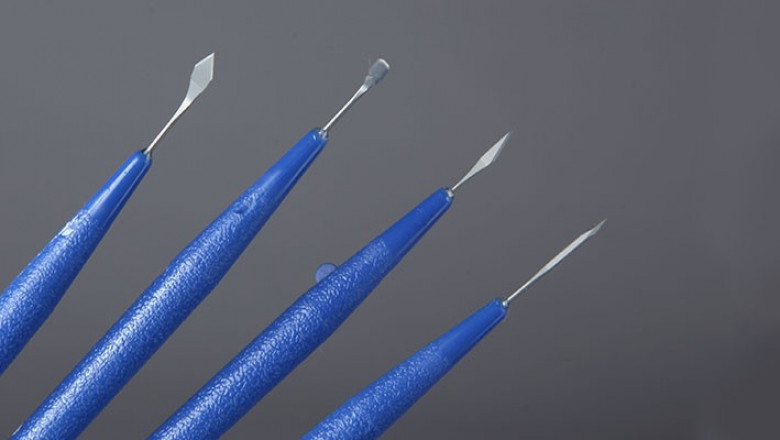views
Introduction
As demand for precision tools in ophthalmic surgery continues to rise, pricing dynamics and value chain structure play a vital role in shaping the ophthalmic knives market. Understanding these factors helps manufacturers, distributors, and healthcare providers navigate cost-efficiency, quality control, and market competitiveness. This article provides detailed insights into pricing trends, cost drivers, and a breakdown of the value chain within the ophthalmic knives market.
1. Pricing Trends in the Ophthalmic Knives Market
a. Price Range by Blade Type
-
Disposable Slit Knives: $15–$50 per unit depending on brand, coating, and sharpness.
-
Diamond and Reusable Knives: $400–$1,000+ per unit due to high-precision materials and durability.
-
Customized or Robotic-Compatible Blades: Priced at a premium, often exceeding $1,500 per kit or unit.
b. Cost Variation by Region
-
North America and Europe: Higher pricing due to stringent quality standards and brand premium.
-
Asia-Pacific and Latin America: Competitive pricing with a growing presence of local manufacturers offering affordable alternatives.
-
Middle East and Africa: Price-sensitive markets with a strong preference for economical disposable knives.
c. Factors Influencing Price Points
-
Material type (diamond, stainless steel, tungsten carbide)
-
Blade coating and finish (nano-coating, diamond-dust)
-
Sterilization (pre-sterilized vs. non-sterile)
-
Customization (surgeon-specific designs, adjustable depth)
-
Packaging (single-pack sterile, bulk packs, or part of surgical kits)
2. Value Chain Analysis
The ophthalmic knives value chain consists of multiple interdependent stages, each influencing the product’s quality, availability, and final price.
a. Raw Material Suppliers
-
Key Inputs: Stainless steel, diamond, tungsten carbide, plastic/resin for handles.
-
Trend: Growing demand for eco-friendly and biocompatible materials.
b. Manufacturers
-
Activities: Blade shaping, coating, sharpening, handle attachment, and sterilization.
-
Strategic Focus: Advanced manufacturing techniques like laser-cutting, CNC machining, and clean-room sterilization.
-
Notable Hubs: U.S., Germany, Japan, India, and China.
c. OEM and Private Label Producers
-
These companies manufacture ophthalmic knives for well-known brands under licensing or OEM contracts.
-
OEM production is significant in Asia-Pacific, reducing end-user costs while maintaining global quality.
d. Distributors and Wholesalers
-
They play a key role in navigating regional regulations, warehousing, and supplying hospitals and ASCs.
-
Distributors often influence the final retail price due to markup for logistics, regulatory compliance, and after-sales service.
e. End-Users
-
Hospitals, eye care clinics, and ambulatory surgical centers are the primary buyers.
-
End-user demand is shaped by surgeon preferences, purchasing budgets, and surgery volumes.
3. Cost Optimization Strategies in the Value Chain
-
Bulk Manufacturing & Packaging: High-volume production helps lower per-unit costs, especially for disposable knives.
-
Automation in Production: Reduces labor costs and increases consistency in blade quality.
-
Near-Sourcing: Companies are relocating production closer to high-demand regions to reduce shipping costs and regulatory hurdles.
-
Integration with Surgical Kits: Offering knives as part of bundled cataract or LASIK kits to increase value and reduce procurement complexity for end-users.
4. Competitive Pricing Strategies
a. Tiered Product Offerings
-
Companies offer basic, mid-range, and premium lines to cater to different budgets.
-
Example: Basic stainless-steel knives for developing markets vs. diamond-coated blades for premium segments.
b. Subscription and Contract Models
-
Long-term procurement contracts with ASCs and hospitals enable discounts and consistent supply.
-
Some suppliers offer annual usage agreements with guaranteed knife replacements.
c. Localized Pricing
-
Prices are adjusted based on local purchasing power and reimbursement rates, especially in government-run healthcare systems.
5. Emerging Challenges and Pricing Pressures
-
Rising Raw Material Costs: Especially for tungsten and diamond, impacting high-end knife pricing.
-
Regulatory Costs: Compliance with international standards like ISO 13485 and CE marking adds to manufacturing costs.
-
Price Competition: Surge of low-cost manufacturers in Asia-Pacific is pressuring established brands to reconsider pricing structures.
-
Sustainability Demands: Eco-friendly packaging and low-waste production practices are becoming cost drivers.
Conclusion
Pricing trends and value chain dynamics in the ophthalmic knives market reflect a delicate balance between surgical performance, material cost, and economic feasibility. With customization, quality control, and single-use safety driving demand, manufacturers must optimize every stage of the value chain to remain competitive. Strategic partnerships, automation, and region-specific pricing models will play a central role in shaping the future economics of this rapidly evolving surgical tool segment.




















![Asphalt roofing shingles market [New Report] by Updated Development 2033](https://timessquarereporter.com/upload/media/posts/2025-04/15/asphalt-roofing-shingles-market-new-report-by-updated-development-2033_1744714139-s.jpg)

Comments
0 comment